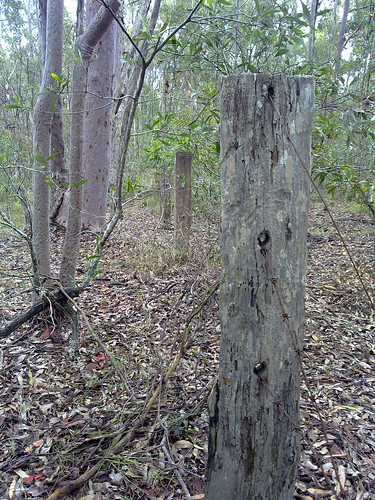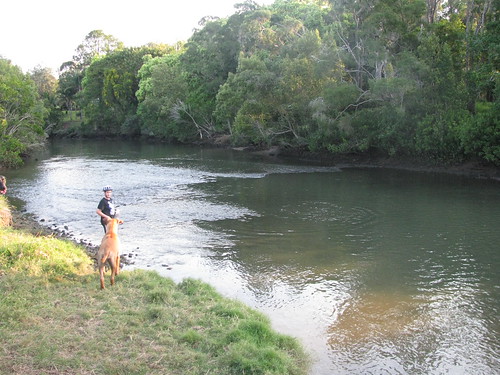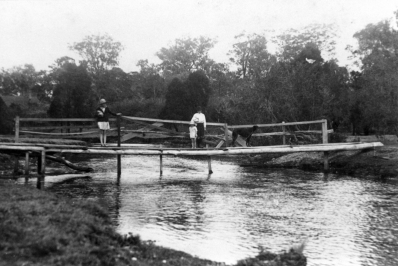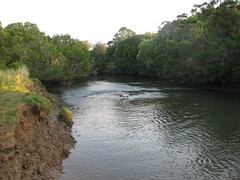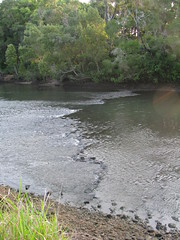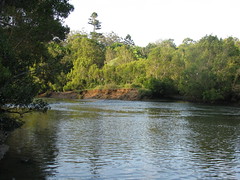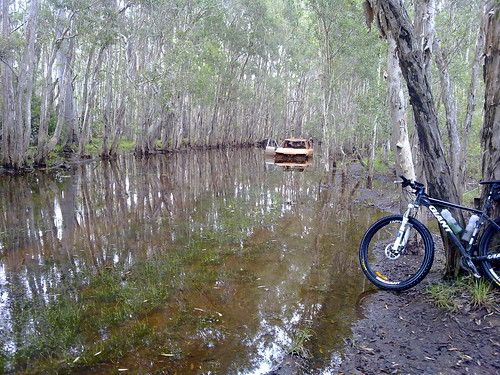It was raining heavily this morning, so I decided to postpone my trip out to the old Ferny Grove to Dayboro railway, and instead visit another “place that is no more”.
Harrisons Pocket once was a thriving little farming community almost 10km directly west of Petrie. In this area, the North Pine River twisted around almost three quarters of a circle forming a “pocket”, and Harrisons pocket nestled along the banks of the river at this point.
It had a school, formerly known as Harrisons Pocket Provisional School, then State School, and a Post and Telegraph Office.
You didn’t really drive through, because it was located in a natural cul-de-sac in the river. The way out was over a shallow part of the river about 3km south east, called “Gordon’s Crossing”. This was one of the earliest crossings of the North Pine River, predating Youngs Crossing by at least twenty years. Incidentally, if you’ve ever been on Gordons Crossing Road, now you know what it’s named after.
Sadly, these places are now inundated by the North Pine dam. You can get pretty close by riding through some scrubby bushland along some fire roads, which is what Harrison and I did today in the pouring rain. (I think he was curious about a place that shared the same name as him).
He found the ride very difficult, especially on some of the muddy tracks. To his credit, he persevered and we made it back home safely.
In the map below you can see the original course (in blue) of the North Pine River before it was dammed. The red track is the path that Harrison and I took. You can click on some of the markers on the map to see the location of the post office, the school and Gordon’s Crossing.











